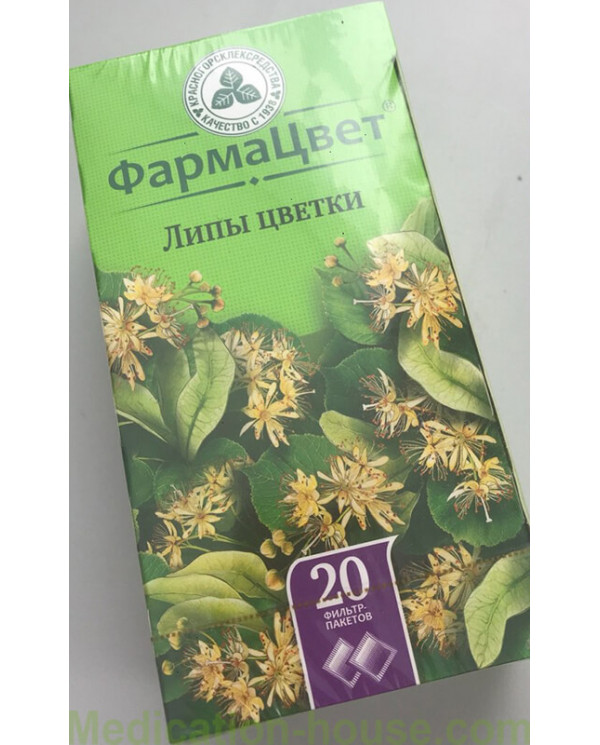Linden flowers user manual
To buy Linden flowers just add it to your shopping cart
Pharmacological group
Antimicrobial, antiparasitic and anthelmintic / antiseptics and disinfectants.
Pharmacological action: antiseptic, diaphoretic.
Pharmacological properties
The drug is of herbal origin. Linden flowers contain polysaccharides, essential oils, flavonoids, tannins, saponins, carotenoids, macro- and microelements, ascorbic acid and other biologically active substances. Linden flowers has an antiseptic and diaphoretic effect.
pharmachologic effect
Blooming linden unites about thirty species of trees and over a hundred hybrid species. Trees are characterized by a powerful trunk, a dense crown and a long life span - an average of more than 300 years. The most common species is small-leaved linden, which is used as a medicinal, melliferous, industrial and food plant.
Linden begins to bloom in the 20-30 year of life, usually in June-July for two weeks. Linden flowers are harvested when more than half of the flowers bloom, and the rest are in the bud stage.
The flowers of Linden are dried in well-ventilated rooms, in the shade of air or in special dryers at a temperature not exceeding 45 degrees. From 1 kg of fresh flowers, on average, about 300 g of dry raw material is obtained. With proper storage, the Linden flowers do not lose their healing properties for 3 years.
The medicinal properties of linden flowers have been known for a long time and are used in both traditional and traditional medicine. Linden flowers contain bitter and tannins, essential oils, saponins, flavonoids, vitamins, sugar, coumarin, wax, glucose, carotene, micro and macro elements. The medicinal properties of Linden flowers allow them to be used as a diaphoretic, sedative, diuretic, anti-inflammatory and astringent to improve the secretion of gastric juice, sweating, increase the secretion of digestive glands and facilitate the outflow of bile.
Linden is used to produce Linden coal, which is used as an absorbent for tuberculosis, food poisoning, stomach diseases, diarrhea, and as an external agent for treating bleeding open wounds. Tar is obtained from linden wood, which is widely used to treat eczema. The Linden bark prepared in winter is used as a choleretic agent. Fresh chopped kidneys Linden is used as a painkiller and anti-inflammatory for burns.
Indications
Acute respiratory viral infections (as symptomatic therapy).
Method of using linden flowers and doses
Linden flowers are taken orally, in the form of an infusion, which is prepared as follows: 1 briquette (8 g) or 2.5 tablespoons (about 10 g) of raw material is placed in an enameled dish, pour 200 ml of boiled water, heated, covered with a lid, for 15 minutes boiling water bath, then for 45 minutes at room temperature, cool, filter, squeeze out the remaining raw materials, bring the volume of the obtained infusion to 200 ml with boiled water.
Preparation of infusion from filter bags: 2 to 3 bags are placed in an enameled or glass dish, pour 100 ml of boiling water, leave for 15 minutes, covered with a lid, then squeeze filter bags, bring the volume of the obtained infusion to 100 ml with boiled water.
The infusion is taken warm 2 to 3 times a day, patients older than 16 years - 1 to 2 glasses; 13 - 16 years old - 1 glass each; 7-12 years old - 0.5 cups each; 3 - 6 years - 1/3 cup, up to 3 years - 1 - 2 tablespoons.
Shake the infusion before use.
Contraindications
Hypersensitivity, hay fever.
Pregnancy and lactation
The use of the drug during pregnancy and breastfeeding is possible according to the doctor’s prescription, if the expected benefit to the mother is greater than the possible risk to the fetus and baby.
Terms of sell
You can buy Linden flowers without a prescription.

